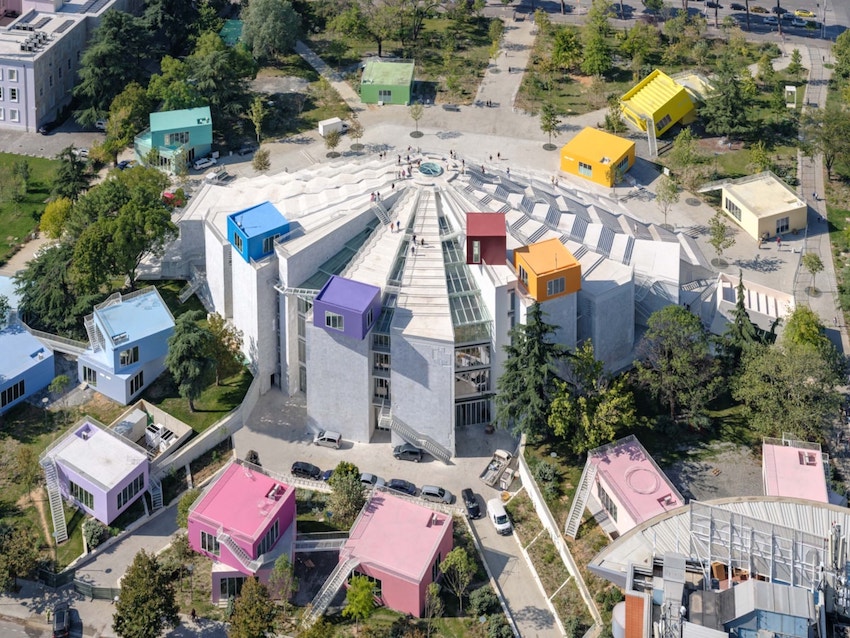
Nathalie de Vries of MVRDV Architects
Adaptive reuse transforming community space
Sponsored by Vitro Architectural Glass | Presented by Nathalie de Vries
Nathalie de Vries is a founding partner at MVRDV Architects–a global architecture firm with a reputation for innovative, unexpected mixed-use design and focus on urban planning. In this episode, de Vries discusses some of MVRDV’s projects including the Pyramid of Tirana and The Canyon. Through these projects, she explains how adaptive reuse can transform the meaning of a community space and how architects can solve urban design problems while also creating spaces people love.

Photo courtesy of NVRDV
The transformation of the Pyramid shows how a building can be made suitable for a new era, while at the same time preserving its complex history, and demonstrates that historic brutalist buildings are ideal for reuse. The project also meets a number of the Sustainable Development Goals outlined by the United Nations.
 |
Aaron Prinz is the host of the Design:ED Podcast and holds a Masters of Architecture degree from the University of Texas at Austin. He was born and raised in the rural Northern California town of Red Bluff, just two hours south of the Oregon border. After one year of college, Prinz relocated to San Francisco to pursue a career in stand-up comedy. At age 26, he began studying architecture at Portland State University while interning at Studio Petretti Architecture led by Amanda Petretti. His professional contributions while at Studio Petretti were focused on a portion of the new Multnomah County Courthouse which is a prominent addition to the Portland skyline. He currently resides in Austin, Texas with his wife Roxanne where he continues to work as a designer. |
Vitro Architectural Glass (formerly PPG Glass), North America’s largest glass producer, is dedicated to glass innovation and fueled by the same people, plants and products that made PPG Glass one of the industry’s most respected and reliable commercial glass manufacturers.
Originally published in Architectural Record
Originally published in November 2023
LEARNING OBJECTIVES
- List the elements of the Pyramid of Tirana project that helped transform it from brutalist to a “liberated” community space.
- Describe how architects can use color to their advantage, according to de Vries.
- Explain how MVRDV approached The Canyon’s project in collaboration with other partners.
- Discuss de Vries’ view on how architects should think about their designs in terms of the project’s future, or “second life.”












